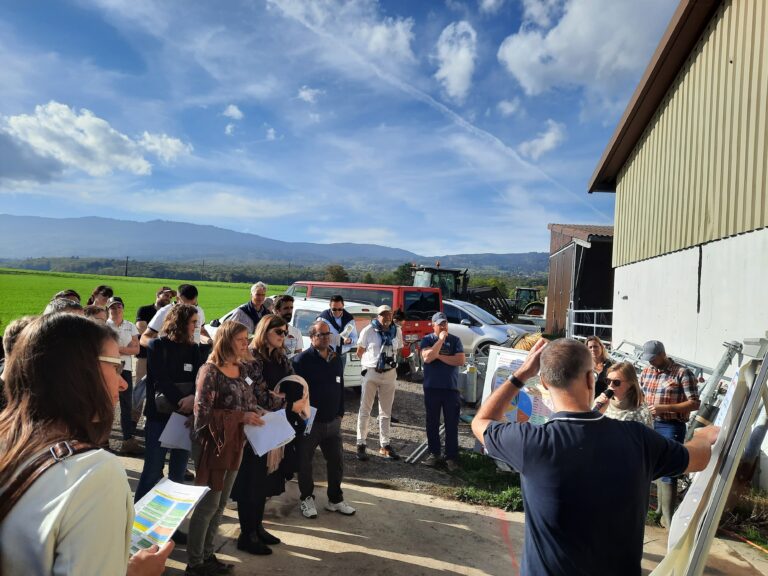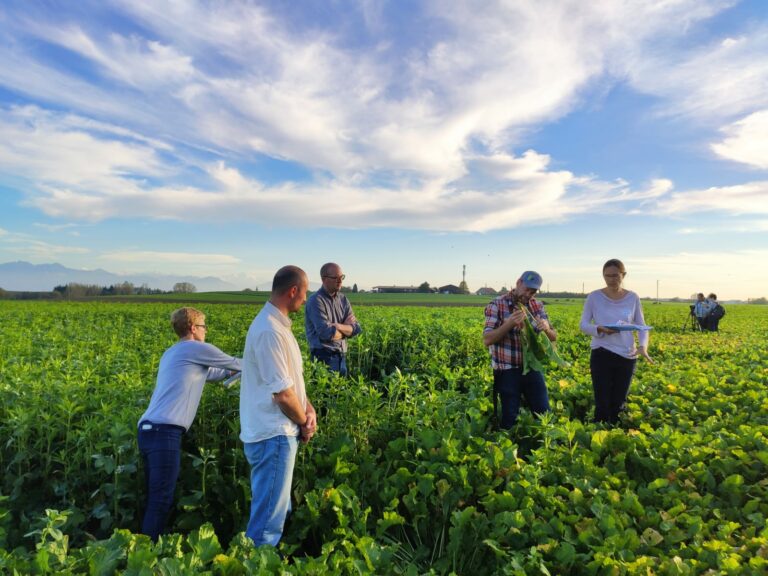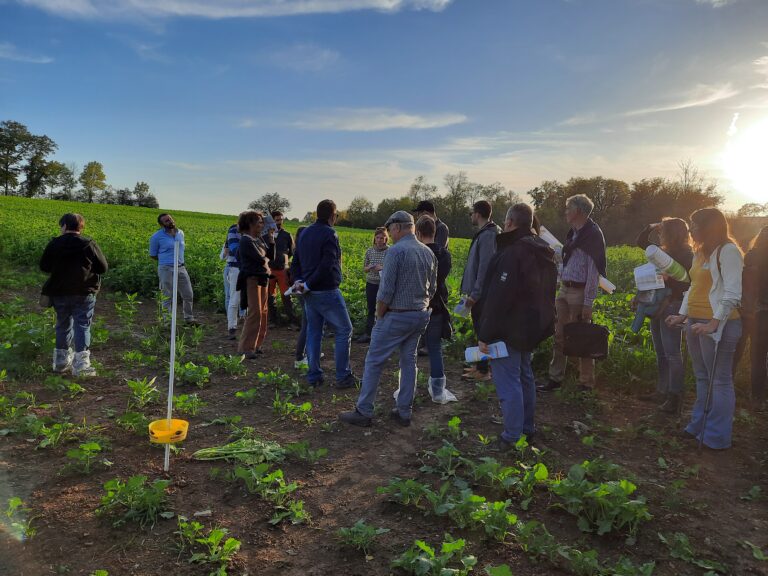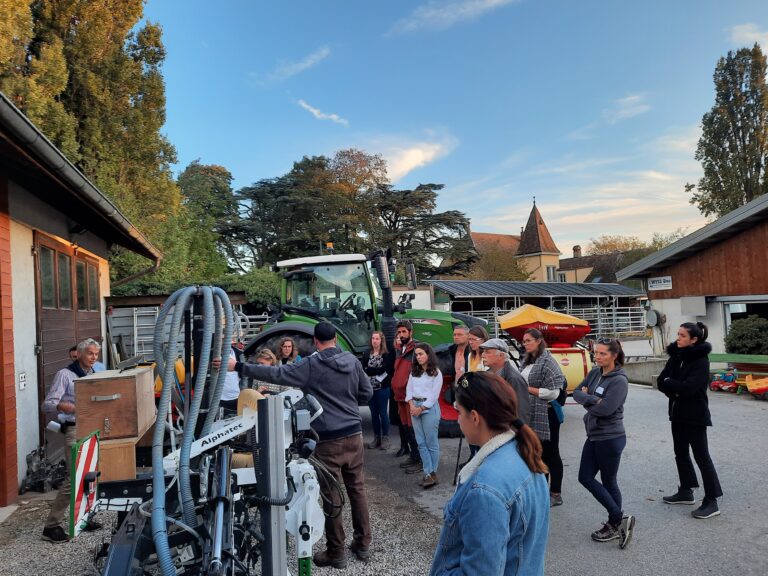Pestired Network (Switzerland) - Arable crops
Visiting the Pestired Network
During the annual meeting, we visited 2 arable farms of the Pestired network. First of all, focus on the IPSuisse label. This label, initially launched by farmers themselves, has particular production specifications in order to implement IPM strategies. The aim is to enable a higher price when the “IPM” productions are commercialised. Most of the Pestired members have at least one crop engaged in this label. This was the occasion to see how engaging in reducing pesticide use can have an economic profitability in Switzerland.
In addition to this commercial label, the PestiRed coordinator presented the different contributions that compensate farmers for their losses when they reduce plant protection products.
We visited two farms, part of the Pestired network, where the group was divided in two in order have smaller groups, with avilable mike and poster for better communication. In each, we visited fields with control and innovative strategies, with the presentation of some interesting machinaries. We had a tight schedule, but we managed to do it all.
First stop at David Chaillet’s farm


The particularity of this farm is that it grows crops and raises livestock, which makes it possible to include grassland in the rotation.
He has a strategy with two types of management, on high added value crops such as seed crops, he does not reduce phytosanitary products. On the other hand, on crops such as beets, maize and legumes (peas, lupines, soya), he uses extensive practices.
The reduction of herbicides has led to more soil disturbance. Although he does intensive tillage of these soils (systematic ploughing), the addition of manure every year, on all crops, allows him to maintain good fertility.
This year he grew oilseed rape on these two Pestired plots. This is the first year he has tested companion crops to control autumn insects. He finds this technique very effective and will test it on all his plots next year.
Second stop at Vincent Delay’s farm


Looking at the strategies to reduce pesticide use on rapeseed, we visited both the conventional rapeseed field and the Pestired strategy field where companion crops were sown with the rapeseed. Within the conventional field, some interesting practices are already tested by the farmer, such as biocontrol against slugs, the localised application of herbicide. His practice implies shredding the rapeseed to control its vigour when entering wintertime. On the second field, the bad timing of the companion crop sowing makes it hard to distinguish the rapeseed among the companion crops. More experience is needed to develop efficient companion, without it being detrimental to the main crop. We could however distinguish in the filed the strips of Brassica rapa subsp. Oleifera crops to create a push pull strategy against pollen beetle.
The downside that was pointed out by the farmer to the Extenso contribution is that, although he is compensated if there is an important crop loss, the label specifications are quite strict and does not enable to intervene in case of high pest pressure to save the harvest. Although compensated, the fulfilment of farmers is to maintain a minimum harvest.
The stop at the farm enabled us to have a look at the different machineries: a combined superficial soil work and localised herbicide application, shredder to control the rapeseed vigour… This led to many exchanges on the connected tractor technologies!
Finally, the visit ended testing the local wines. Thank you for the visit!